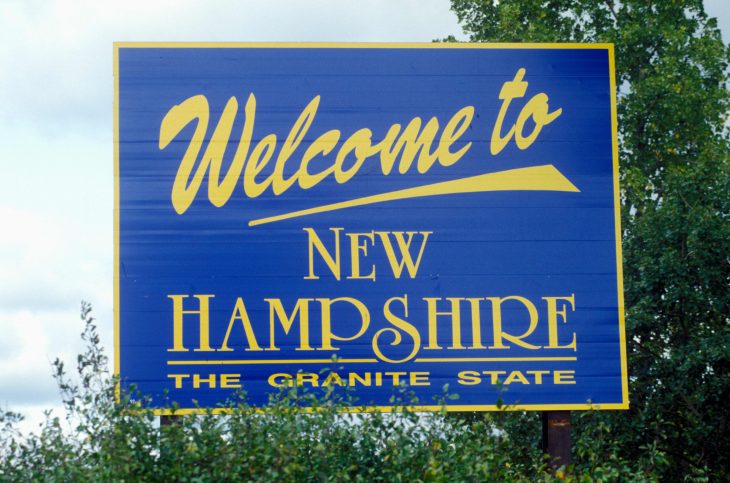
New Hampshire, often celebrated for its rich history, stunning landscapes, and unique culture, stands out as a beacon of the New England charm in the northeastern United States. In this article, we’ll dive into 50 New Hampshire facts that highlight the state’s distinct character, from its rugged mountains to its revolutionary spirit. Each fact shines a light on what makes New Hampshire, the Granite State, a remarkable place to explore.
Mount Washington
At 6,288 feet, Mount Washington claims the title of the highest peak in the northeastern United States. Its weather station recorded one of the highest wind speeds on earth.
Mount Washington Auto Road
This historic road offers a scenic route to Mount Washington’s summit, providing breathtaking views and a unique driving experience.
Granite State
New Hampshire is affectionately known as the Granite State, thanks to its extensive granite formations and quarries.
State Seal
The state seal of New Hampshire features the frigate USS Raleigh and is a symbol of New Hampshire’s commitment to independence and its naval history.
White Tailed Deer
The white-tailed deer, a symbol of New Hampshire’s wildlife, thrives across the state, from rural areas to the dense forests.
Connecticut River
This majestic river forms New Hampshire’s western border with Vermont, stretching over 400 miles from north to south.
Mount Washington Cog Railway
Opened in 1869, this railway is the world’s first mountain-climbing cog railway, offering a unique way to reach Mount Washington’s summit.
Franklin Pierce
Franklin Pierce, the 14th President of the United States and the only president from New Hampshire, served from 1853 to 1857.
New Hampshire’s State Motto
Live Free or Die” is not just a motto but a reflection of New Hampshire’s fierce spirit of independence and resilience.
North Virginia
Before being named New Hampshire, the region was referred to as North Virginia by early English explorers.
State’s Endangered Species List
New Hampshire takes pride in protecting its wildlife, with a dedicated list for endangered species to conserve its natural heritage.
Lake Winnipesaukee
This largest lake in New Hampshire is a popular destination for recreation and offers stunning views year-round.
Atlantic Ocean
New Hampshire boasts a short, but picturesque, 18-mile coastline along the Atlantic Ocean, offering beautiful beaches and maritime activities.
New Hampshire State House
Located in Concord, the state capital, New Hampshire’s State House is one of the oldest state capitols in which the legislature still occupies its original chambers.
New Hampshire Fisher Cats
This Double-A minor league baseball team brings sports excitement to Manchester, showcasing the state’s love for baseball.
State Symbols
From the purple lilac (state flower) to the white birch (state tree), New Hampshire’s state symbols represent the natural beauty and character of the state.
Captain John Mason
The state was named after Hampshire County in England by Captain John Mason, who was granted the territory in the early 17th century.
Native New Hampshire Mammals
The state is home to a diverse range of native mammals, including the moose, black bear, and the elusive bobcat.
Rhode Island Comparisons
Despite its small size, New Hampshire offers a vast array of natural landscapes, cultural richness, and historical landmarks compared to its neighbor, Rhode Island.
Mount Washington Hotel Hosted
This historic hotel hosted the Bretton Woods Monetary Conference in 1944, leading to the creation of the World Bank and the International Monetary Fund.
Salmon Falls River
The Salmon Falls River, along with the Piscataqua, defines the southern boundary of New Hampshire, showcasing the state’s natural beauty.
Mountains: White Mountain State
The White Mountain Range is a hallmark of New Hampshire, offering some of the most stunning and challenging hiking trails in the Eastern United States.
New Hampshire’s State Flag
Featuring the state seal against a blue background, the flag symbolizes New Hampshire’s pride and history.
State Capital: Concord
Concord, the state capital, is not just the political heart of New Hampshire but also a center for culture, arts, and education.
State Income Tax
New Hampshire stands out for having no state income tax, reflecting its motto of “Live Free or Die” in its fiscal policy.
Revolutionary General John Stark
Famed for his role in the American Revolutionary War, Stark’s legacy lives on in New Hampshire’s history and culture.
First Permanent European Settlement
Established in 1623, Dover is recognized as New Hampshire’s first permanent European settlement, marking the beginning of the state’s rich history.
Highest Point
Mount Washington not only offers spectacular views but also stands as a symbol of New Hampshire’s natural grandeur.
Canadian Province Neighbor
New Hampshire shares a northern border with the Canadian province of Quebec, enhancing its cultural and economic ties with Canada.
New Hampshire Government
The state’s government, rooted in the oldest permanent state constitution in the U.S., reflects New Hampshire’s long-standing values of democracy and independence.
First State Library
New Hampshire is home to the first state library in America, established in 1717 in Portsmouth. This library marks a significant milestone in the country’s commitment to education and access to knowledge.
Northern New Hampshire
The northern part of the state, known for its vast wilderness and outdoor recreational opportunities, offers a contrast to the urbanized south.
New Hampshire Residents
Known for their independence and community spirit, New Hampshire residents embody the state motto “Live Free or Die.”
Geographic Center
The geographic center of New Hampshire lies in Belknap County, symbolizing the heart of the Granite State.
National Parks
Though New Hampshire is known for its state parks and natural beauty, it actively contributes to the conservation of national parks as well.
Only State
New Hampshire holds the distinction of being the only state to host the signing of a foreign treaty on its soil, the Treaty of Portsmouth.
State Flag: Nine Stars
The nine stars around the state seal on New Hampshire’s flag represent it as the ninth state to join the Union.
First Alarm Clock
Invented by a New Hampshire resident, the first alarm clock was a testament to the state’s innovative spirit.
Purple Lilac
Chosen for its hardy nature and the beauty of its bloom, the purple lilac reflects New Hampshire’s resilience and natural beauty.
Captain John Smith
One of the first Europeans to explore and map the New England coast, Smith’s work laid the groundwork for future settlements, including New Hampshire.
Native Americans
Before European settlement, New Hampshire was inhabited by Native American tribes, who left a lasting impact on the state’s culture and geography.
England States
New Hampshire is part of the New England region, known for its significant historical events, cultural identity, and distinct seasons.
State Motto: Live Free or Die
Crafted by Revolutionary General John Stark, this motto encapsulates New Hampshire’s values of liberty and self-reliance.
President Franklin Pierce
As the only United States President from New Hampshire, Pierce’s legacy is a point of state pride.
State Seal Centered
The state seal, centered on New Hampshire’s flag, symbolizes the state’s independence and history.
Rising Sun
The rising sun on the state seal represents New Hampshire’s hope and prosperity.
American Civil War
New Hampshire played a significant role in the American Civil War, contributing troops and resources to the Union cause.
Hampshire Teacher Christa McAuliffe
Christa McAuliffe, a teacher from Concord, was selected for the NASA Teacher in Space Project, symbolizing New Hampshire’s contribution to space exploration and education.
Oldest Summer Resort in America
Wolfeboro, New Hampshire, claims the title of the oldest summer resort in America. Founded in 1770, it has been a popular retreat for travelers seeking the serene beauty of Lake Winnipesaukee and the surrounding landscapes.
Oldest Covered Bridge
The Bath-Haverhill Covered Bridge, built in 1829, is the oldest covered bridge in New Hampshire and one of the oldest in the United States. Covered bridges are iconic symbols of New England’s historical and rural charm, and this particular bridge showcases the ingenuity and craftsmanship of early American engineering.
Final Word
New Hampshire’s story is woven from threads of natural beauty, historical depth, and a fiercely independent spirit. These 50 facts about New Hampshire offer just a glimpse into the Granite State’s rich tapestry, inviting explorers to delve deeper into its unique culture and landscapes. Whether it’s the allure of the White Mountains, the charm of its small towns, or the legacy of its historical figures, New Hampshire continues to captivate and inspire those who venture into its bounds.
Was this page helpful?
Our commitment to delivering trustworthy and engaging content is at the heart of what we do. Each fact on our site is contributed by real users like you, bringing a wealth of diverse insights and information. To ensure the highest standards of accuracy and reliability, our dedicated editors meticulously review each submission. This process guarantees that the facts we share are not only fascinating but also credible. Trust in our commitment to quality and authenticity as you explore and learn with us.


